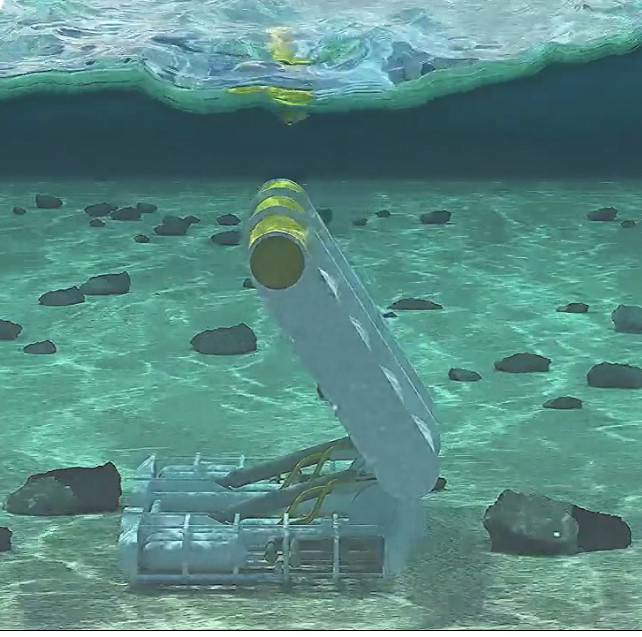Concrete vault surfaces as critical ocean wave energy conduit
Sources: Jacobs, Dallas; CMCM
A cast-in-place concrete vault with precast concrete covers for each of four cells houses splicing and transitioning assemblies for Oregon State University’s PacWave South ocean wave energy testing facility in Seal Rock, Ore.—the first commercial-scale U.S. installation of its kind. Engineering giant Jacobs recently completed work for infrastructure underpinning the project, which includes four offshore steel conduits up to 120 feet below the seafloor and extending a mile offshore. They link to a bundle of five onshore high-density polyethylene conduits, ultimately connecting to the PacWave Utility Connection and Monitoring Facility.

PacWave South can test up to 20 wave energy converters of various designs in real-world conditions seven miles off the Oregon coast. Illustration: Jacobs
“Throughout design and construction, the Jacobs team continued to create innovative solutions,” says PacWave Deputy Director Dan Hellin. “The collaboration on disguising the large concrete vault built at the state park, which was designed to splice and transition energy from offshore to onshore conduits, ensured beachgoers would not see any disruption from the added wave energy testing infrastructure.”

Jacobs and design-build contractor HDD Co. positioned the concrete vault below a new Seal Rock parking lot. Photo: Jacobs
“The engineering for this project was complex, requiring our team to overcome coastal geology challenges, working in the near-shore environment around sensitive coastal wetlands, and meeting a tight schedule to obtain regulatory approval,” adds Jacobs People & Places Solutions Senior Vice President, Global Business Units Koti Vadlamudi. “This reaffirms our commitment to working with organizations that push the boundaries of resilient energy transition.”